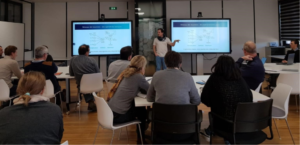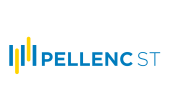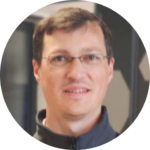AUTOMATED PLASTIC WASTES SORTING WITH DEEP LEARNING
ISSUE
PELLENC ST is a company that designs and manufactures intelligent equipment for the waste sorting and recycling industry. Nowadays, intelligent and efficient equipment means AI. That is why PELLENC ST, with constant innovation in mind, wished to integrate AI to improve the performance of the equipment it manufactures.
SOLUTION PROVIDED
Neovision designed and developed a Deep Learning technology for PET bottle classification. A real time solution running on NVIDIA graphics cards. From the architecture to the training of the model, Neovision led this project from start to finish, in close collaboration with PELLENC ST.
CUSTOMER BENEFIT
PELLENC ST now has a new technology for real-time classification of PET plastic bottles. PELLENC ST equipment is therefore at the cutting edge of technology and ensures an unparalleled level of sorting. As a result, their customers will gain in efficiency and reliability, which is also a good thing for the environment.
REALIZATION
With 1,800 sorting machines around the world and 200 committed employees, PELLENC ST is based on strong values, including technological innovation. These values strongly echo those defended by Neovision. It seems that the two companies were meant to meet.
It was in its search for innovation that PELLENC ST found Neovision via its website. The Pertuis-based company was wondering how AI could improve the performance and functionality of the sorting equipment it designs and markets.
PELLENC ST specializes in waste sorting and it is precisely in this area that the company saw an interest in using AI. We can now say they were right. The goal was to create two technologies – classifiers – for very specific tasks.
The first classifier allows to differentiate between food and non-food packaging. This is a very important distinction since a bottle of bleach shouldn’t be recycled as a bottle of milk for a example. The goal was to improve by 10 to 20% the performance of good classification of food products, and the same for non-food products. Why aim for this performance? If we take into account the known distribution of waste, 80% of it is made up of food packaging against 20% for non-food packaging. A 10 to 20% increase in performance makes it possible to reach a critical threshold of less than 5% of non-food products in the flow of food products and therefore comply with European standards.
The second classifier is assigned to another task that meets the need to sort PET bottles (Polyethylene Terephthalate – a recyclable plastic in short) based on their appearance. Indeed, it is useful to differentiate opaque bottles from transparent ones, colorless bottles from colored ones, or plastic trays from “contaminants” (mostly textile), to be able to recycle efficiently each type of waste.
Here again, the objectives were challenging: to improve the accuracy of each category (6 in all) by 20 to 30%, and more specifically, to have less than 10% of false positives for the transparent bottles category, and less than 5% of trays potentially identified as clear bottles.
Finally, industrial environment means industrial requirements. Waste sorting is done at a very high rate. It must be said that humans are quite good at producing large quantities of waste. To match the speed of the conveyor, the algorithms, or rather the models, must run in less than 4ms (milliseconds). Did you say tight timing?
On top of that, edge computing is often needed in the industry. And this project is no exception. The hardware architecture designed by Neovision had to allow an interface with 2 cameras, image segmentation, classification by Deep Learning and to return the classification to the computer. Basically, everything had to be processed on site and very quickly.
To start the project, we held a conference to explain AI to employees of PELLENC ST. This was very important in order to debunk some of the fears around AI and get everyone involved in the project.

Neovision actively collaborated with Pellenc ST: the teams started to develop the two classifiers without taking into account the constraints: formatting and annotations of the database, design of neural networks, Python implementation of the networks, performance evaluation and comparison with the objectives, development of a demo and of course, documentation of the code and parameters.
Following this first step, the results were already very promising and allowed to apprehend the integration of the constraints with optimism.
In a second step, Neovision integrated the famous 4 ms constraints. To do so, Neovision carried out optimization and porting work on its algorithms. Neovision optimized its neural networks to meet the computation time constraints while designing the hardware architecture. The choice of the computational hardware was made on an NVIDIA card.
After these two steps, the networks were implemented in C++ on the target architecture and, of course, tested.
And the results exceeded PELLENC ST’s expectations. The classifiers designed and developed by Neovision achieve an accuracy of 94% (93.8% to be totally accurate) with an inference time under 1.5 ms per image. The technology developed by Neovision allows PELLENC ST to process more than 1000 bottles per second. So many bottles that will not end up in an incinerator!
ASSOCIATED TECHNOLOGIES AND EXPERTISE
COMPUTER VISION, DEEP LEARNING, ON PREMISE, C++, GPU
TESTIMONIAL
« Thanks to Neovision’s expertise, we have been able to achieve excellent classification performance on complex sorting applications where our current solutions have reached their limit. The support provided by Neovision’s engineers and researchers has also enabled us to increase the skills of our R&D engineers on cutting-edge subjects, particularly thanks to the remarkable quality of the deliverables and reports provided during the study.»
Nicolas Grotus, Research Manager at PELLENC ST/b>
Date
20 April 2021
Category
Computer Vision, Deep Learning, Environnement, GPU, On Premise, R&D



